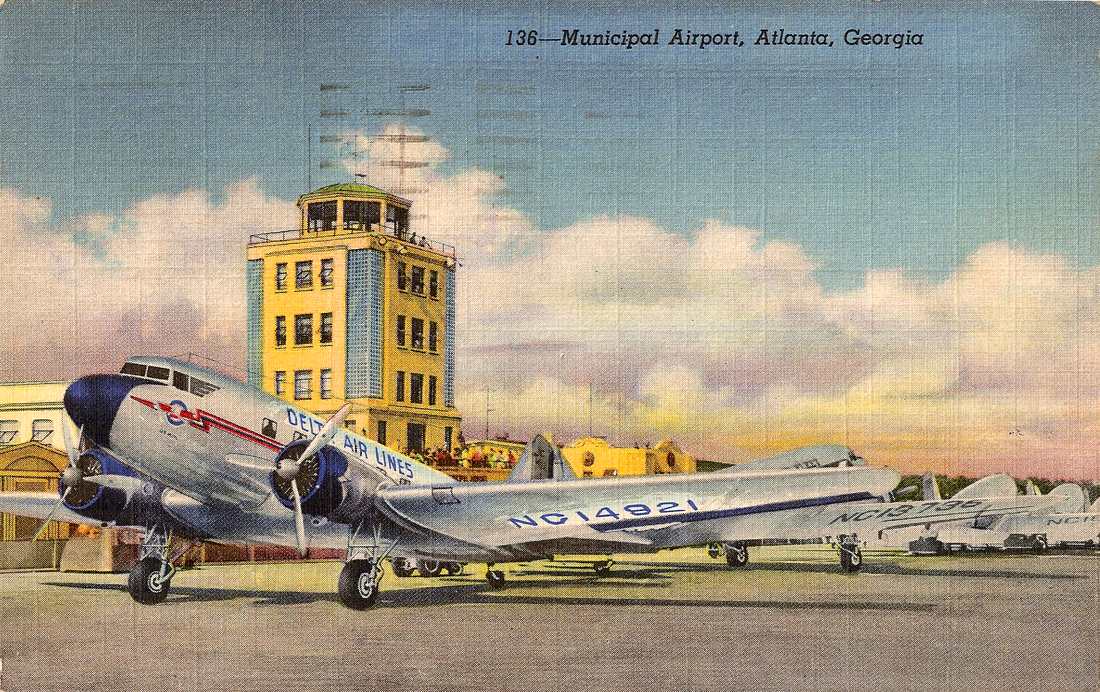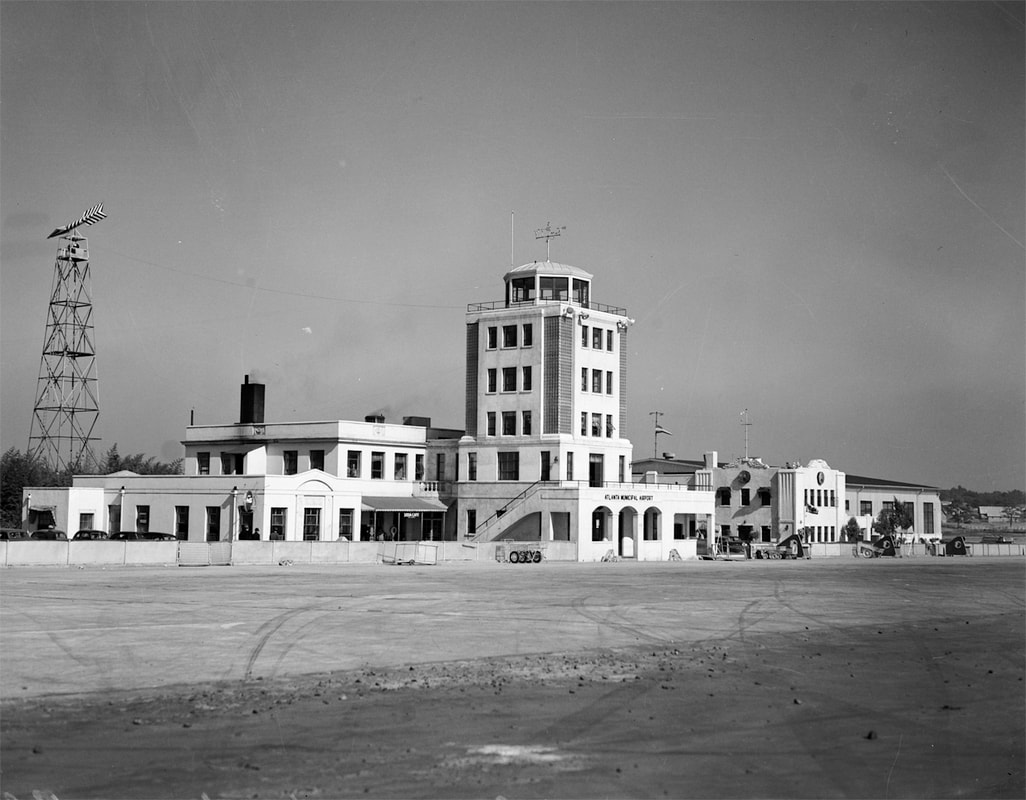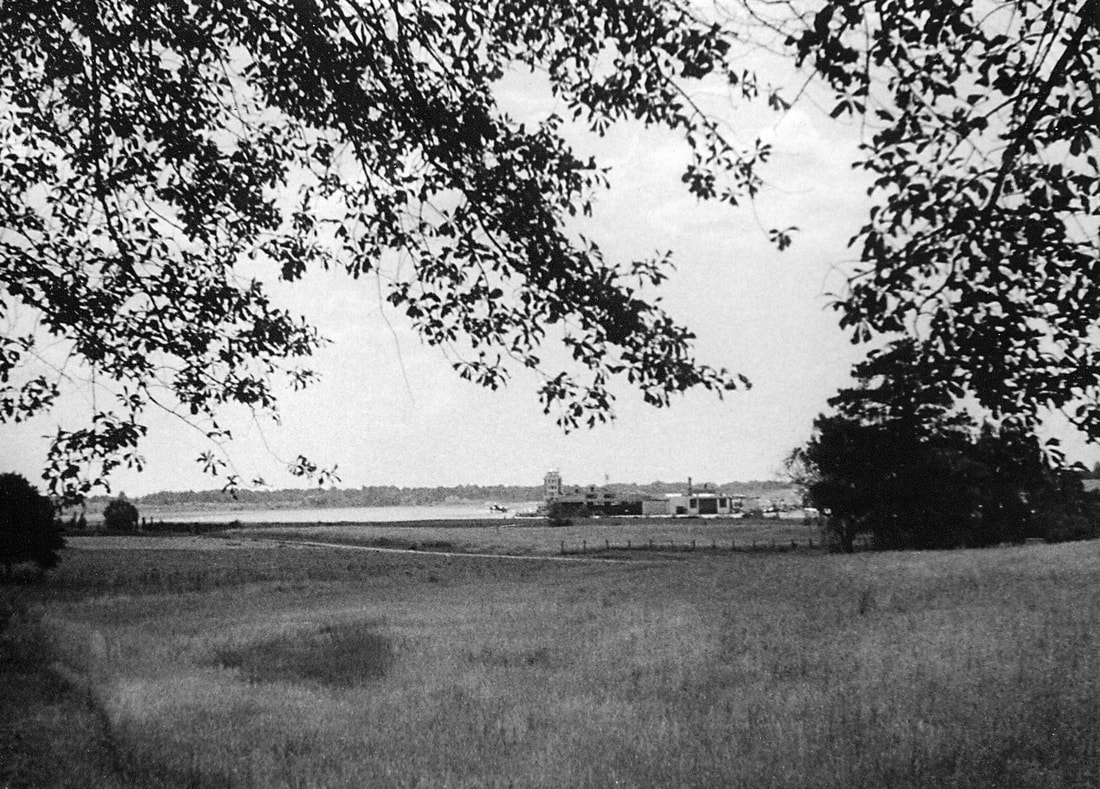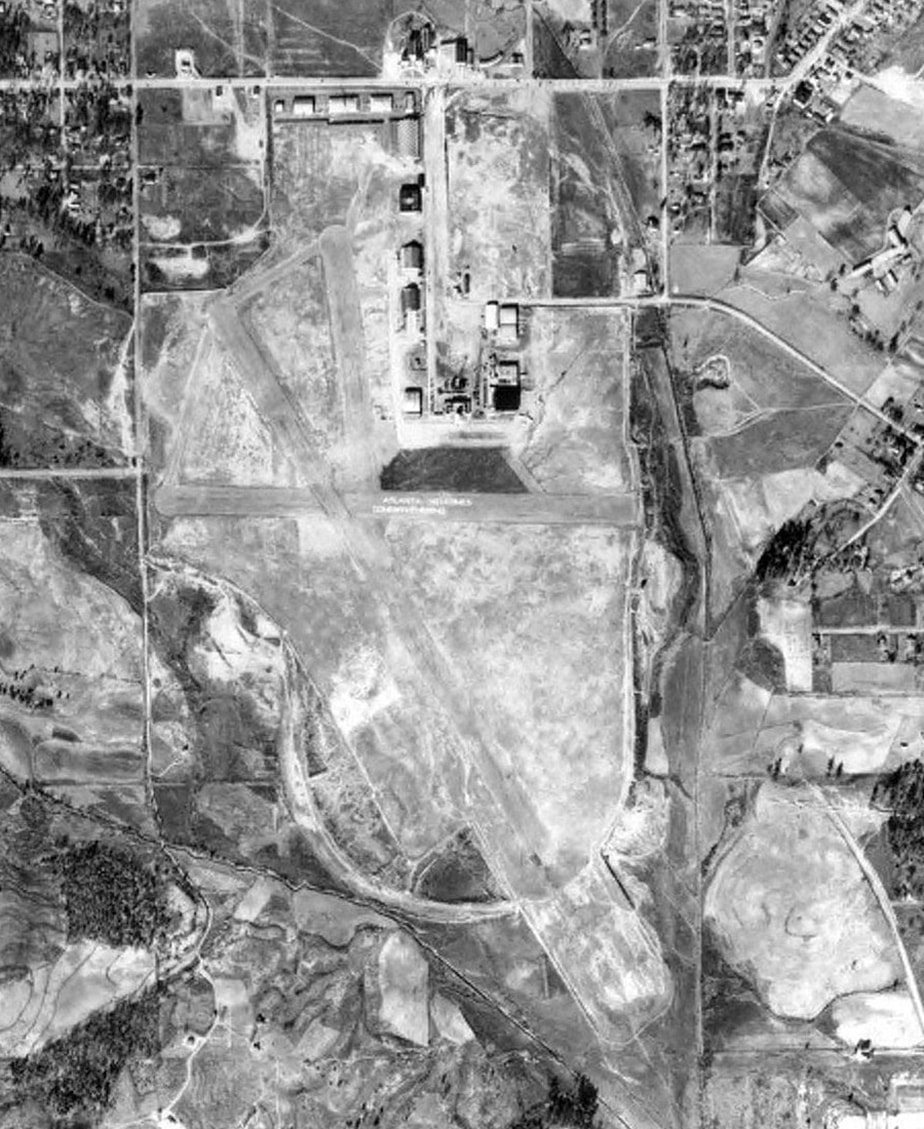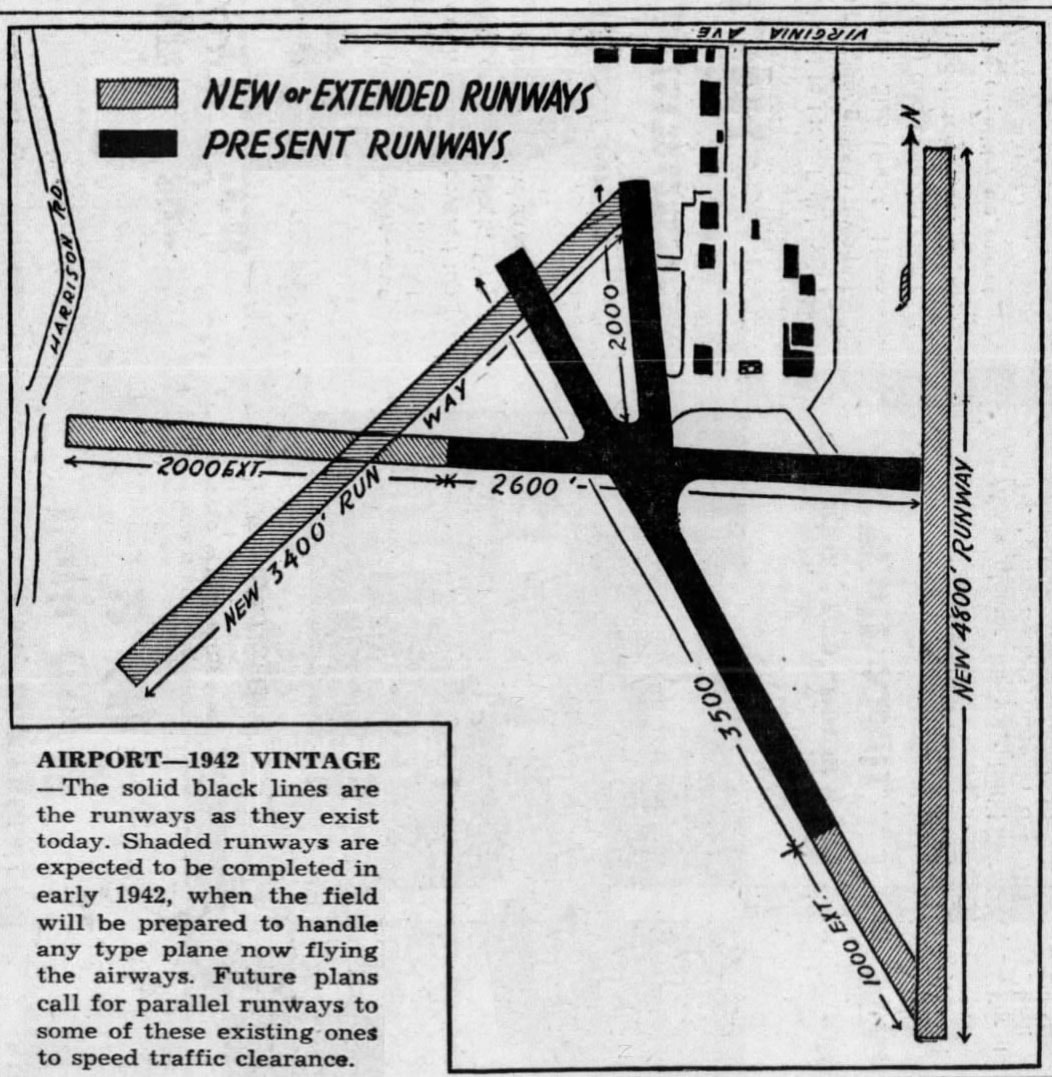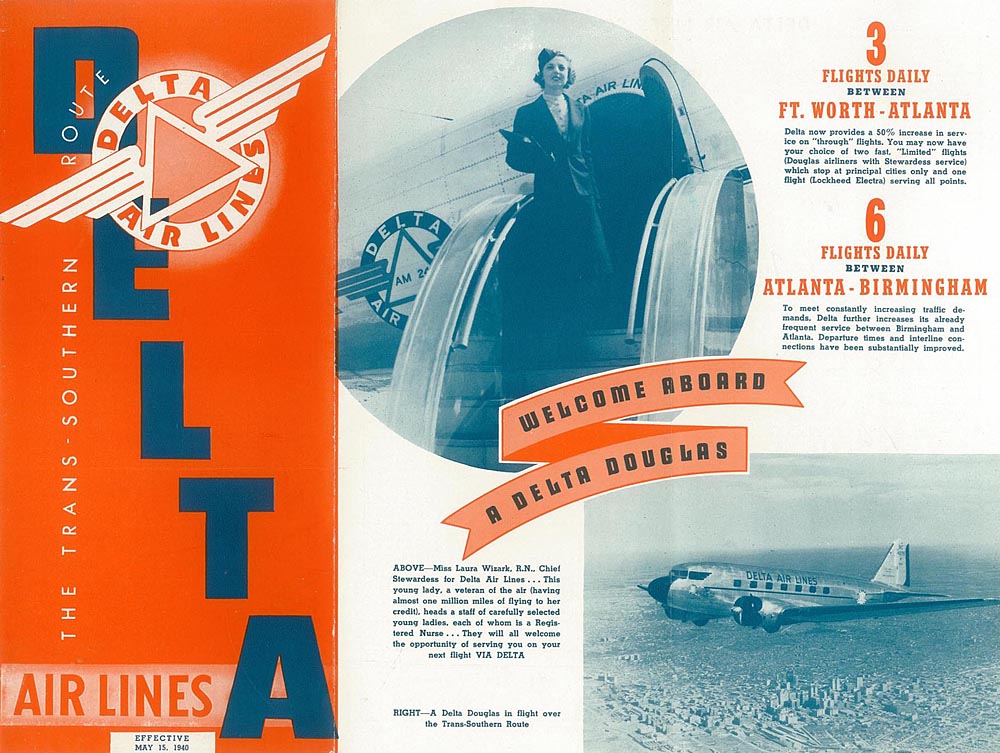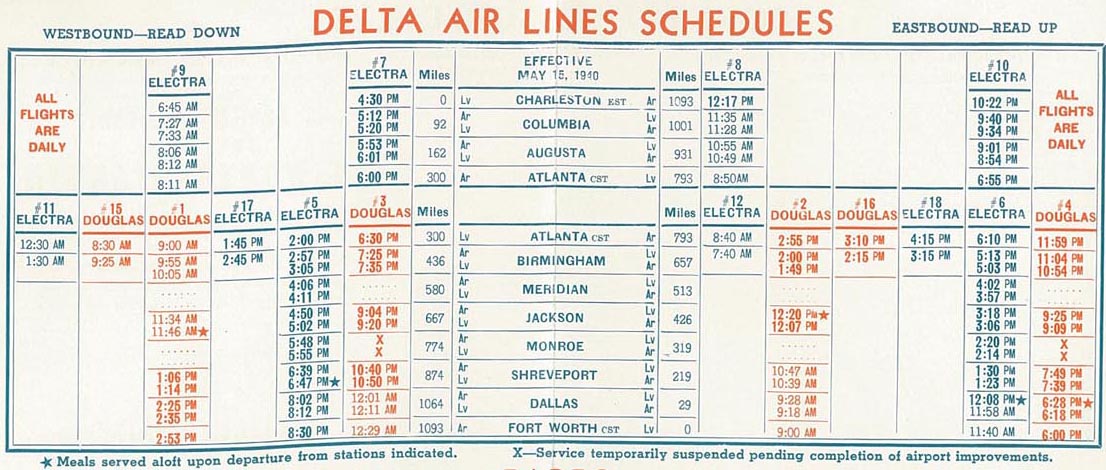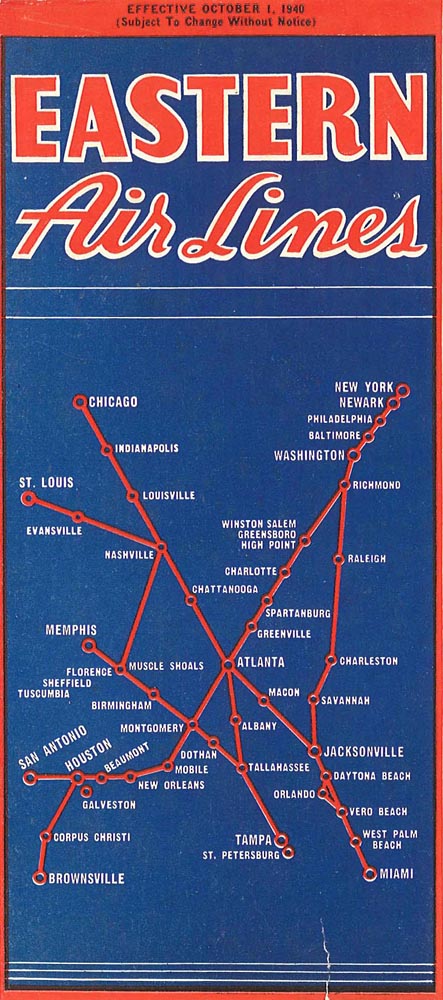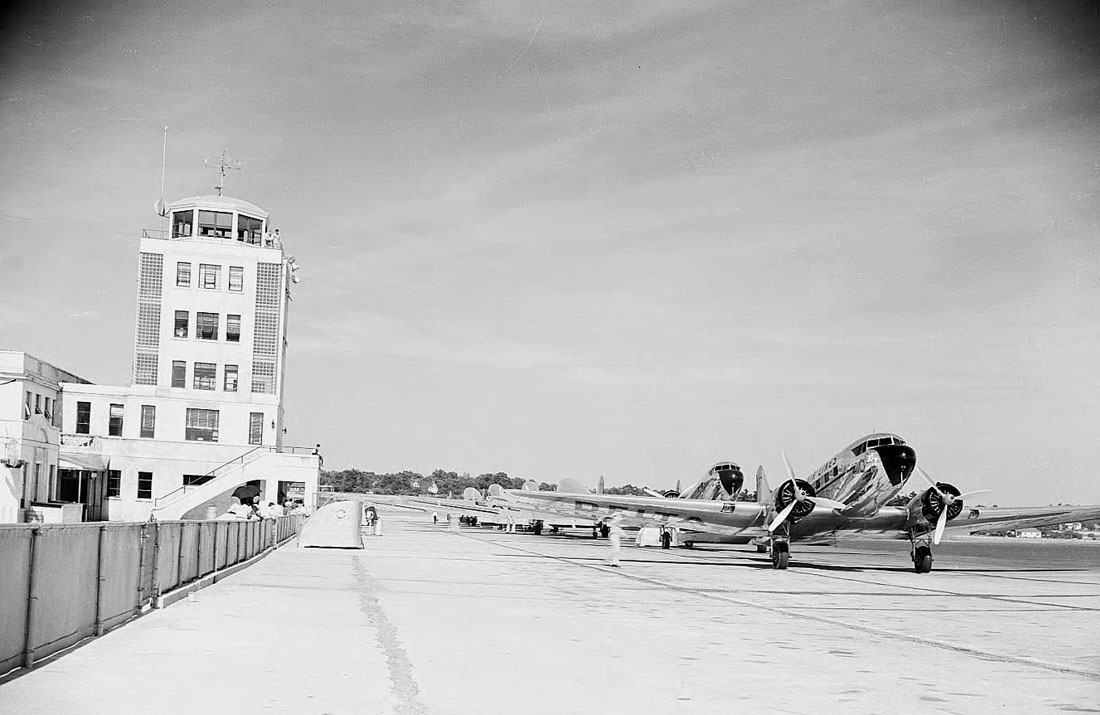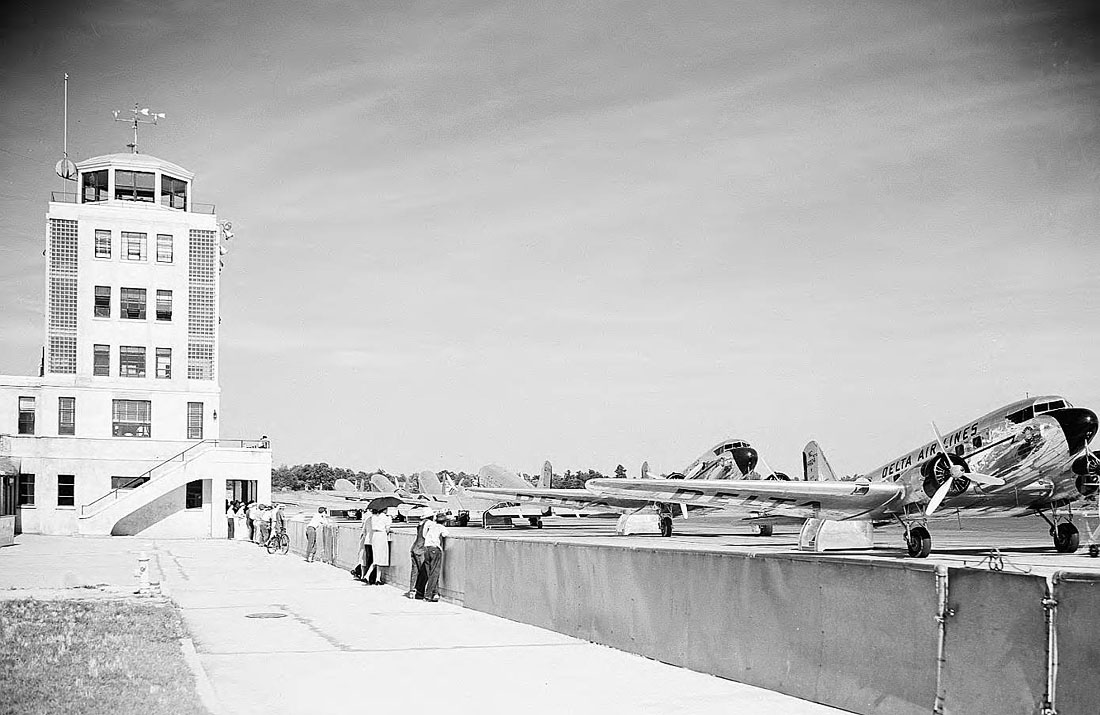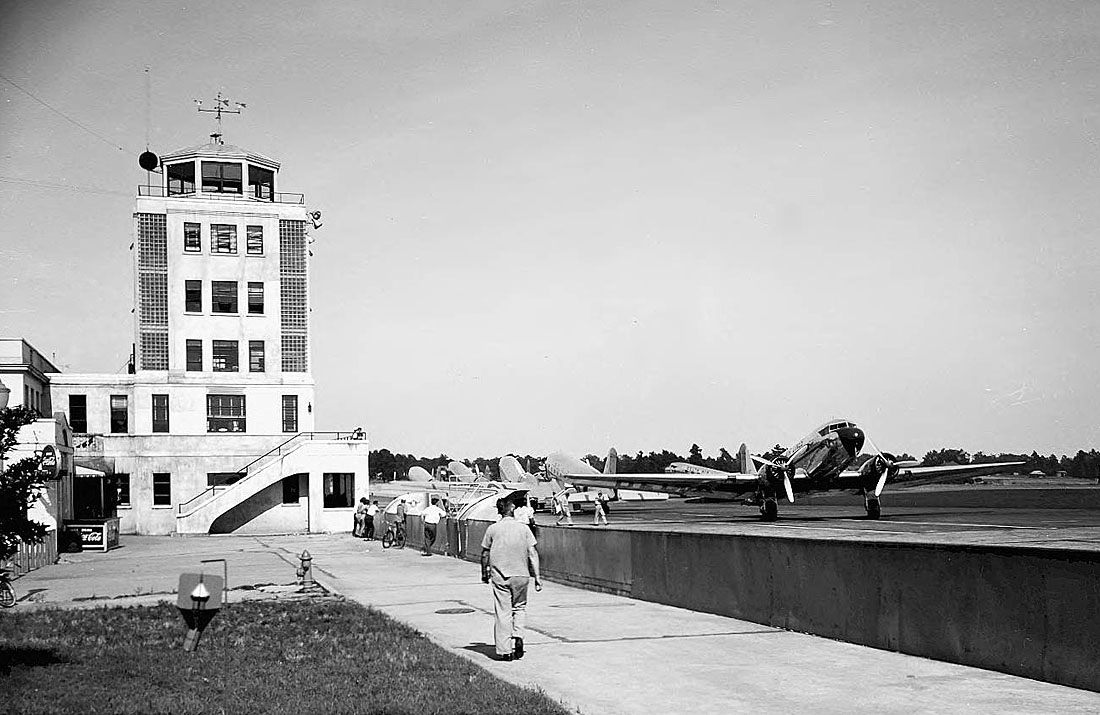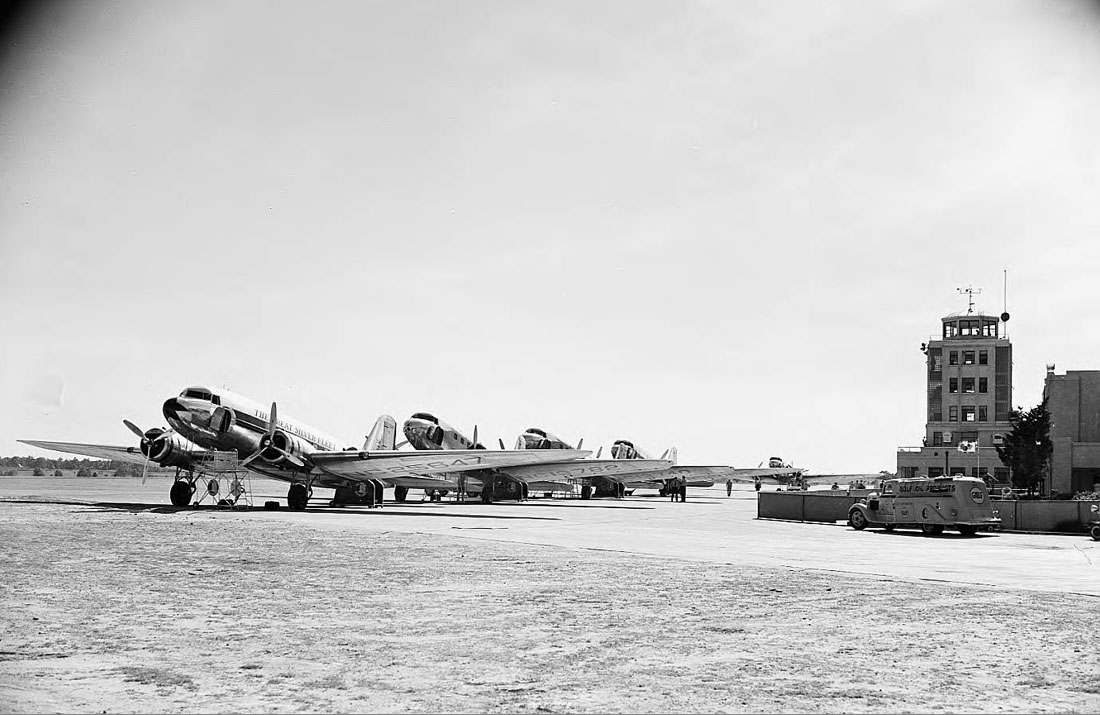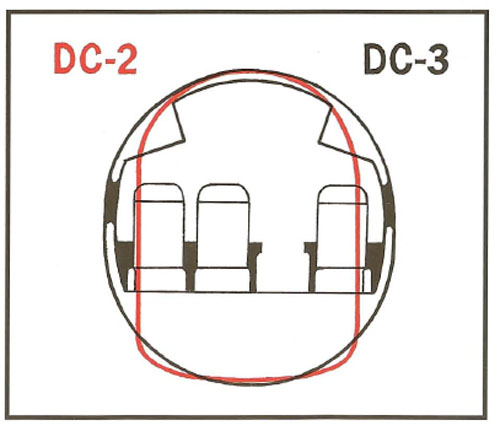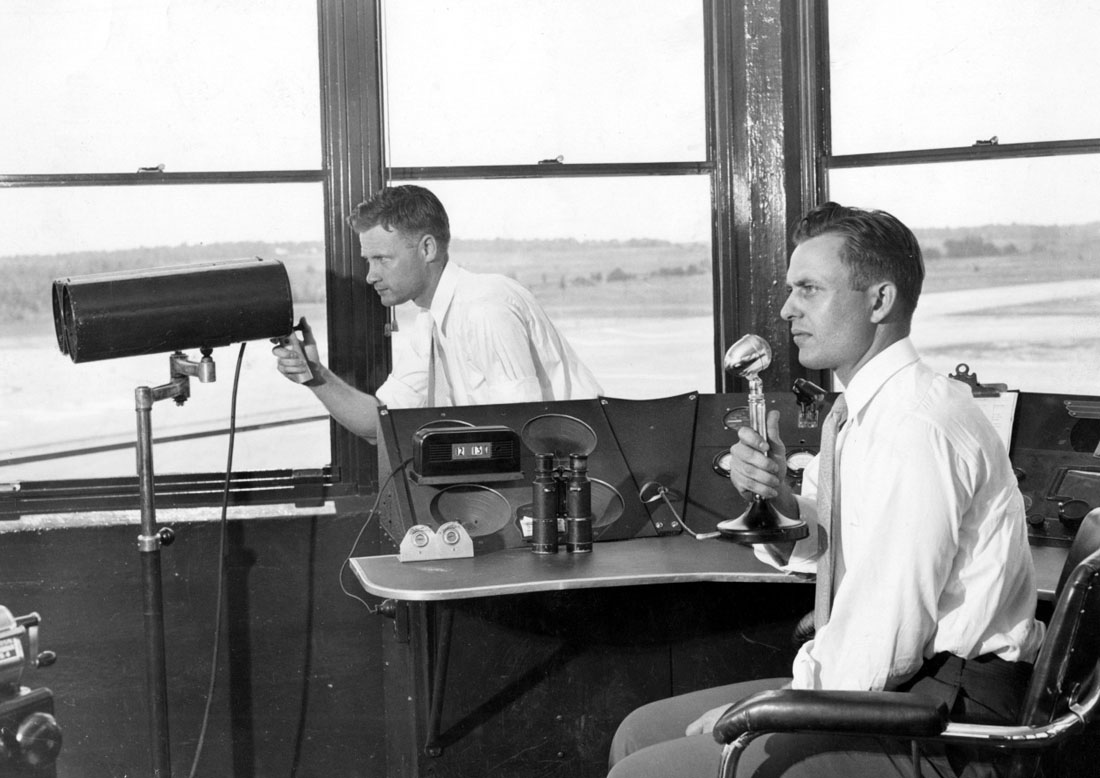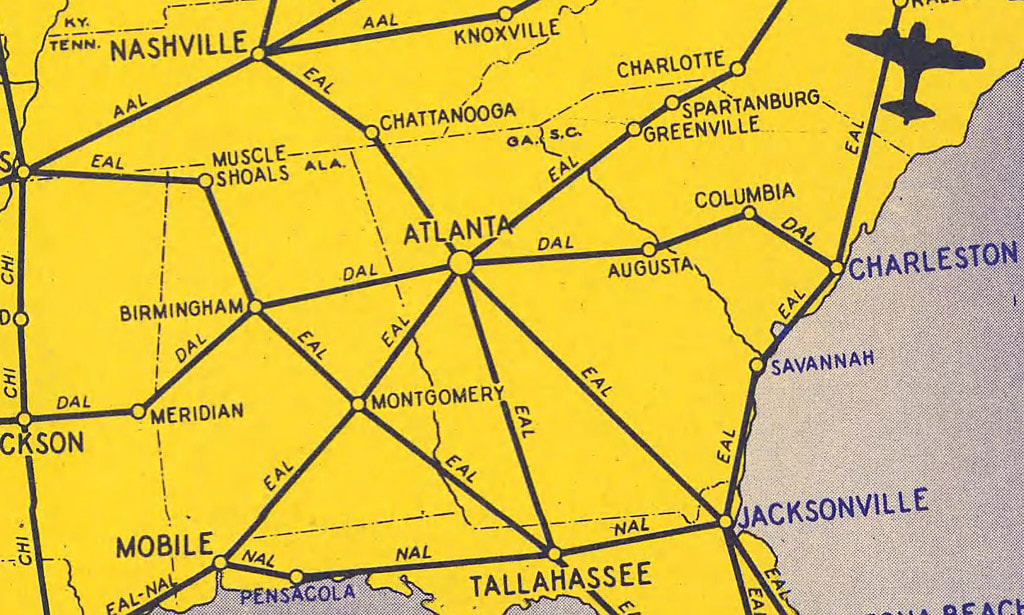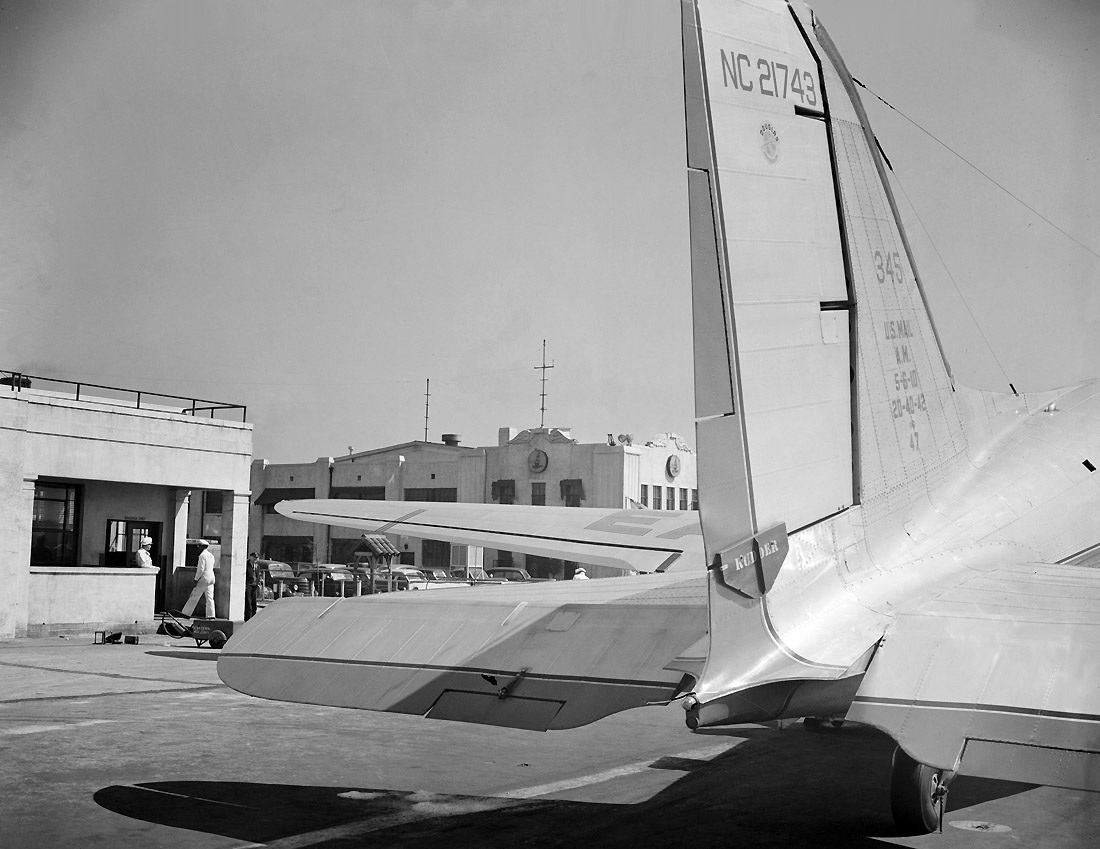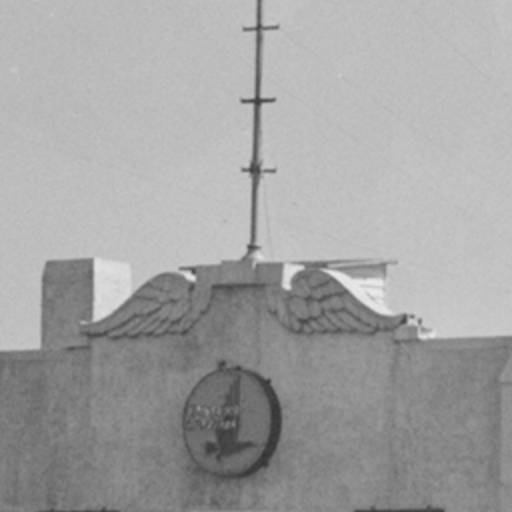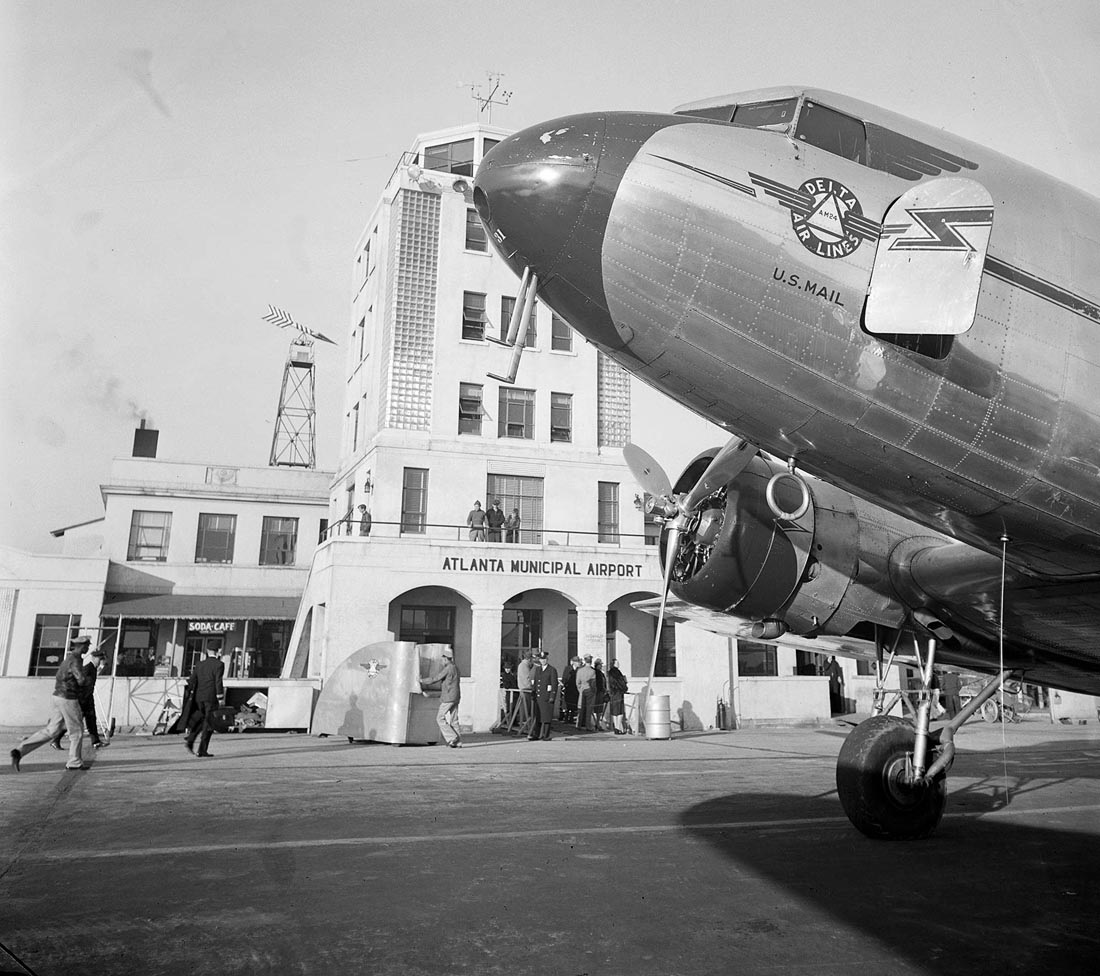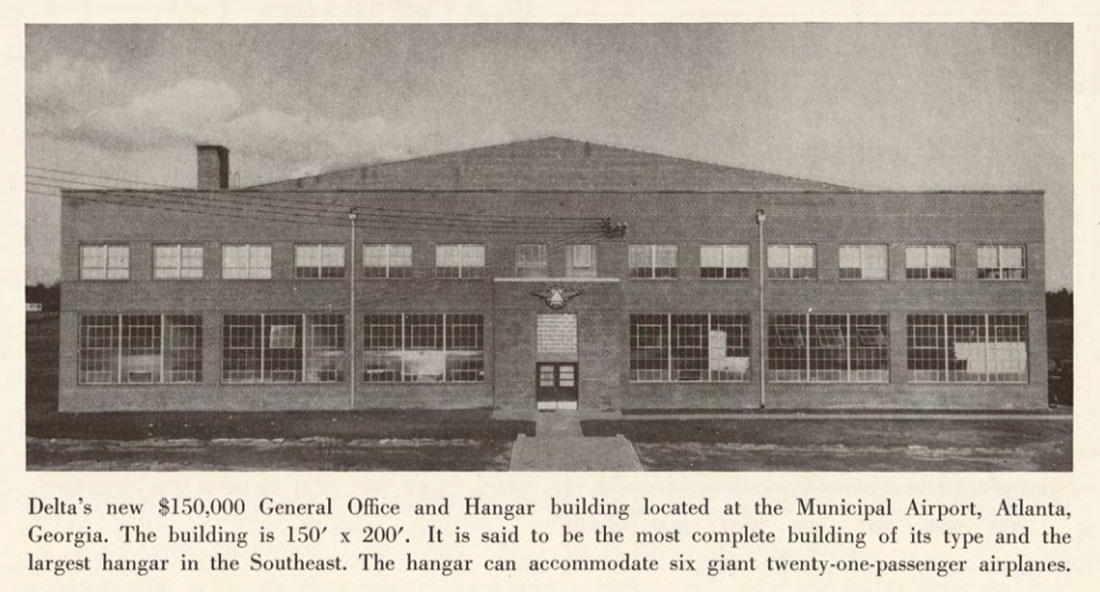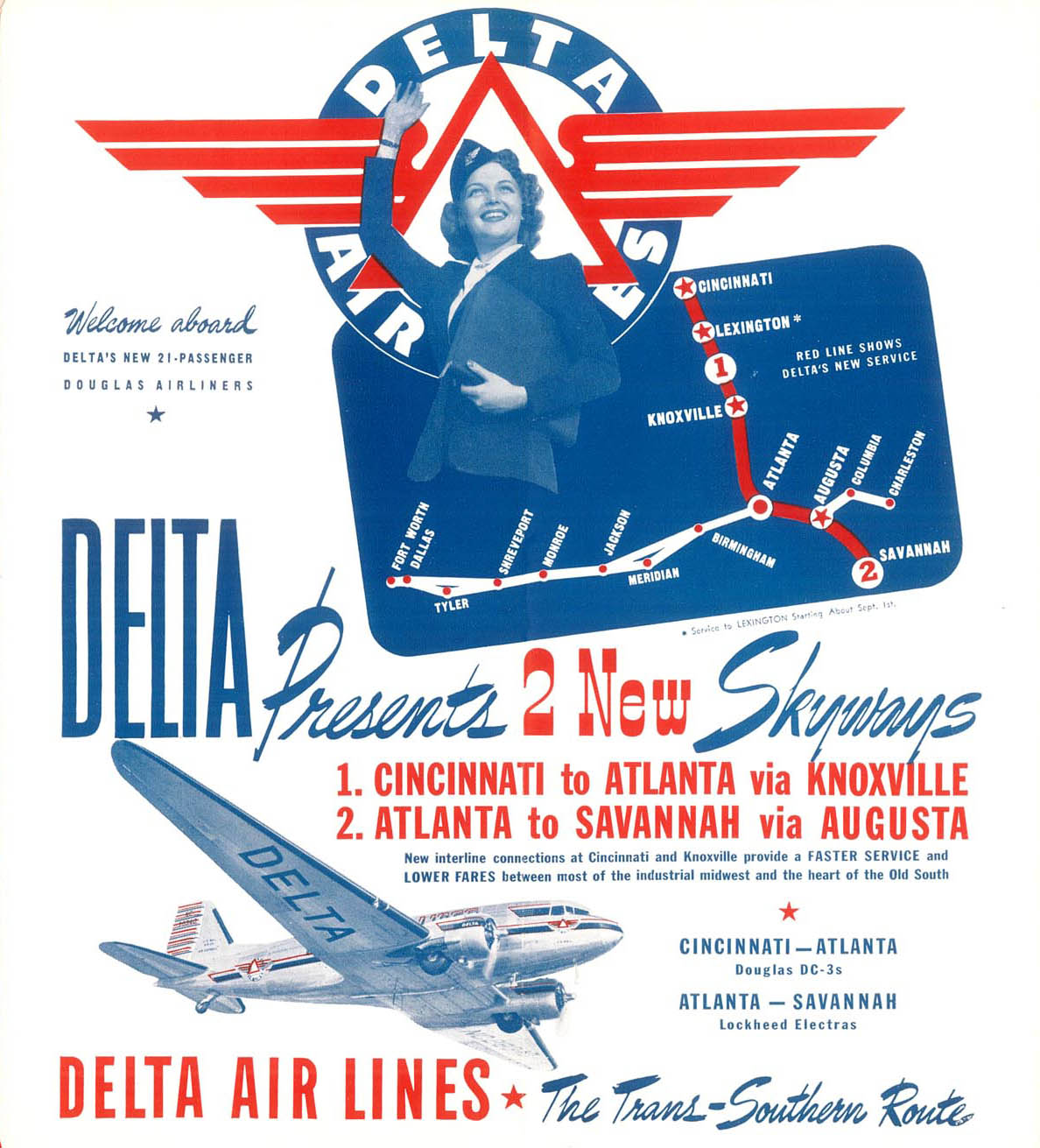ATLANTA AIRPORT IN THE EARLY 1940S
Atlanta Municipal Airport entered the 1940s with a new control tower and administration building and traffic was growing rapidly as the airlines were awarded new routes, flying them with sleek, modern DC-3s and DC-2s.
The postcard below, circa 1940, shows the recently completed control tower that was added to the south side of the existing terminal opened in 1932. Note the observation deck on the second level. The Delta aircraft in the foreground is a Douglas DC-2 and a quartet of Eastern Air Lines DC-2s can be seen behind it. The planes are facing opposite directions because Delta's DC-2s, bought from American Airlines, had the passenger door on the right side of the fuselage while Eastern DC-2s had the door on the left side. Delta operated a total of four of the 14-passenger DC-2s during 1940 and 1941. They were replaced by larger and more economical DC-3s. The Delta aircraft pictured here, along with several other DC-2s purchased from American Airlines, was featured in the film A Thousand Hours while still in operation with American. The Eastern DC-2 NC13736 directly behind the Delta aircraft still exists and is reportedly awaiting restoration in Albury, New South Wales.
The postcard below, circa 1940, shows the recently completed control tower that was added to the south side of the existing terminal opened in 1932. Note the observation deck on the second level. The Delta aircraft in the foreground is a Douglas DC-2 and a quartet of Eastern Air Lines DC-2s can be seen behind it. The planes are facing opposite directions because Delta's DC-2s, bought from American Airlines, had the passenger door on the right side of the fuselage while Eastern DC-2s had the door on the left side. Delta operated a total of four of the 14-passenger DC-2s during 1940 and 1941. They were replaced by larger and more economical DC-3s. The Delta aircraft pictured here, along with several other DC-2s purchased from American Airlines, was featured in the film A Thousand Hours while still in operation with American. The Eastern DC-2 NC13736 directly behind the Delta aircraft still exists and is reportedly awaiting restoration in Albury, New South Wales.
A midday view of the terminal and Eastern building circa 1940. From the Atlanta History Center collection.
If you look to the far right in the above photo you'll see a dairy farm in the distance. This next photo was taken from that property facing back towards the airport. The farm is now the location of the north cargo ramp.
An aerial view of Atlanta Municipal Airport taken in 1940 shows three paved runways, the longest of which was only 3,500 feet long. Mayor William Hartsfield was largely responsible for the improvements made to the airport following two incidents in 1939 in which aircraft ran off the short runways. Virginia Avenue runs across the top of this photo and remnants of the old racetrack can be seen at the bottom.
The nearly $1 million in planned airport improvements are detailed in this map published in the October 26, 1941 Atlanta Constitution.
Delta Air Lines timetable effective May 15, 1940 highlighting increased flight frequencies following the introduction of the Douglas DC-2. From the collection of Björn Larsson at TimetableImages.com.
Delta's flight schedules effective May 15, 1940 show 8 daily arrival and departures at Atlanta. Douglas DC-2 flights are shown in red and flights operated with Lockheed Electras are shown in blue. From the collection of Björn Larsson at TimetableImages.com.
Eastern was by far the dominant airline at Atlanta in 1940 and this October 1st timetable shows 27 departures a day. From the collection of Björn Larsson at TimetableImages.com.
The following series of photos taken around Atlanta's Municipal Airport terminal come from Georgia State University's Digital Collections and, by cross-referencing the N-number registrations in R.E.G. Davies' books "Eastern : An Airline And Its Aircraft" and his similar Delta Air Lines book, I was able to determine this was 1940, not 1941 as indicated on the GSU website. The people in these photos are wearing short sleeve shirts, the sun is directly overhead, and there are leaves on the trees, leading me to believe these were taken in Summer 1940. In any case, these photos are fantastic!
The first three photos are facing east and show Delta DC-2s in the foreground and Eastern Air Lines DC-2s and a DC-3 behind them.
The first three photos are facing east and show Delta DC-2s in the foreground and Eastern Air Lines DC-2s and a DC-3 behind them.
A view facing to the west with an Eastern Air Lines DC-3 in foreground followed by a line of DC-2s. By checking the aircraft registration numbers, I was able to determine this was indeed 1940. DC-3 NC25647 (in front) entered service on June 8, 1940 while the DC-2 behind it, NC13782, was sold in December 1940.
A side note: To the untrained eye, the DC-3 and DC-2s in the above photos look virtually identical. One of the main differences between the two is the width of the fuselage. The DC-2 had 2 seats in each row while the DC-3 had 3 seats across (in later years, commuter airlines such as PBA had 4 seats across). This illustration of the fuselage cross-sections is taken from R.E.G. Davies' Eastern Air Lines book.
Here's a rare shot of the control tower interior from 1940, courtesy of the Atlanta Journal-Constitution archives. Their caption read: "J. H. Boyd, radio operator of the Communications Station, with a few of the teletype machines which bring weather data and other airways messages from all over the United States. In case of war these machines could handle military communications." Teletypes and other technology were improving although in 1940 planes were still tracked on large paper maps.
A detail from the Official United States Scheduled Air Services map published by the Skelly Oil Company in 1940 shows 7 routes radiating out of Atlanta flown by Eastern (EAL) and Delta (DAL). The entire map can be found at the Rumsey Map Collection website.
A circa 1941 shot of Eastern Air Lines DC-3 NC21743 parked at the 1932 terminal. The building in the background at center was the Eastern Air Transport building and was Atlanta's first passenger terminal during 1930-32. It continued to be used as Eastern's administration building after the municipal terminal opened in 1932.
A great little architectural detail of the former Eastern terminal from the above photo.
A magnificent view of Delta DC-2 ship 31 at the gate in this photo dated January 1941.
In 1940, Atlanta and Delta signed an agreement in which the city agreed to contribute $50,000 toward construction of a new hangar and office building for Delta if they would move their headquarters to Atlanta. The airline agreed to pay the remainder of construction costs and assume a 20-year lease on the building. Delta Air Lines officially moved their corporate headquarters from Monroe, Louisiana to this new facility in Atlanta on March 1, 1941. It was a move that would eventually transform the airport into the world's largest connecting hub and would have a profound impact on the development of Atlanta and the state of Georgia.
Following the move to Atlanta, Delta wasted no time adding new routes from their new home base. This advertisement from their May 10, 1941 timetable announces new routes between Atlanta and Cincinnati and Atlanta and Savannah, the first branches from the original trans-southern route. Delta introduced the 21-passenger Douglas DC-3 in 1940, eliminating the competitive disadvantage the airline suffered from flying older and smaller aircraft than Eastern. From the collection of Björn Larrson.

